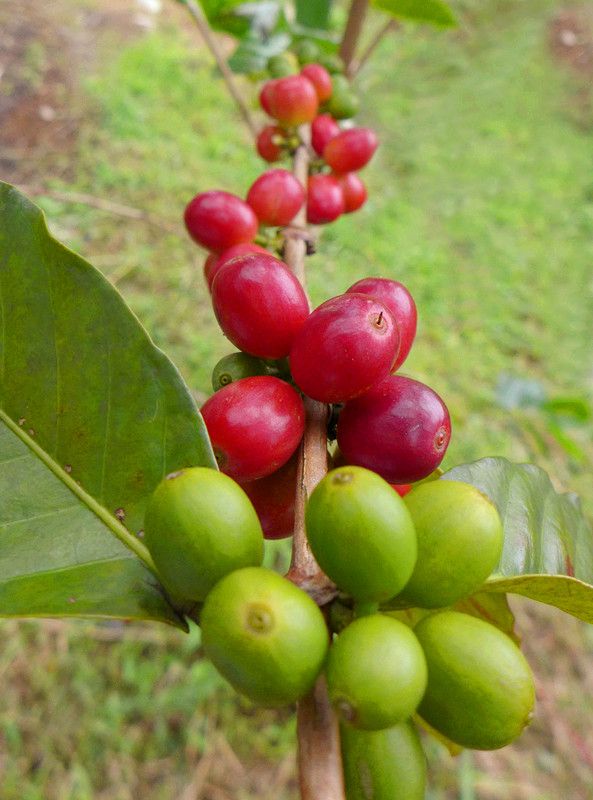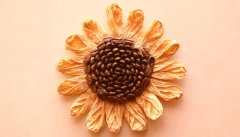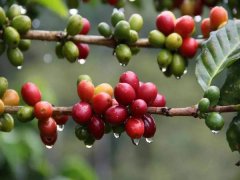Coffee planting: sowing seeds in coffee estates in Nicaragua

For professional baristas, please follow the coffee workshop (Wechat official account cafe_style)
When I visited the nursery when I was young, I only knew how to plant seeds, irrigate them at the right time, and have enough sunshine, so that the seedlings would grow. With more scientific knowledge, we also realize the importance of fertilization and disinfestation. People who grow up in cities have little contact with the lives of farmers except for potted plants at home. Because of coffee, the author has the opportunity to feel the actual difference between "planting with interest" and "farming for the sake of supporting his family".
Coffee is one of Nicaragua's main exports. Coffee is produced in 10 of the 16 provinces. Due to the high mountains in the north, it is more suitable for coffee cultivation, so 93% of the country's production comes from the four northern provinces: Jinotega, Matagalpa, Nueva Segovia and Madriz. Among them, the quality of Nueva Segovia is the best; in the national COE competitions in the past few years, more than 80% of the winning coffee came from this district. One of the farms I visited was Un Regalo de Dios, the 2010 award-winning farm surrounded by the Dipilto-Jalapa Mountains.
Select excellent seeds
"all the trees on this hillside can be picked. Remember to choose the branch that stretches in the middle of the trunk and the fuchsia ripe fruit that grows in the middle. " In the early morning of the next day, I was still getting used to jet lag. When I was half dreaming and half awake, listening to the translation, "in the middle and in the middle", can't you pick the red one? It turns out that the fruit we picked is reserved for seed. In order to retain excellent descendants, selection has begun from the fruit harvest stage.
It takes three years for a coffee tree to be sown and first harvested. In order to ensure that each seed can produce strong and high-yielding seedlings, farmers will choose the most potential fruit as the seed. They grow in the middle of the main trunk, and the fruit in the middle of each branch theoretically absorbs the most nutrients. Being able to survive on the tree to purplish red means that the fruit is healthy and has a more complete core.
"what you have to do after that is the same as dealing with drinking coffee beans: meat removal, fermentation and desquamation. However, in order to avoid damaging the embryo of the bean tip, all the processes have to be done manually. " I was secretly glad that I was inefficient and that there was only a small basket in the whole morning's harvest, otherwise "the more you work, the more you get". Dozens of coffee fruits, repeatedly pressed with two fingers to force the core out, took a total of 1 hour! Looking at the scattered beans at the bottom of the plastic tube, I can't help thinking that "every grain is the hard work of the farmers."
It's time to sow the seeds. The jeep drove to a fragmented hillside: there was no walk, only a few fig and banana trees of different heights, messy hay lying flat, some lying pine poles, and piles of citronella by the side of the road. The leading agronomist (agronomist) said, "this is where the seedlings grow." We planted those shadow trees (shade tree) two years ago and pruned them by calculating the distribution of sunlight in each season. The sand pile under the hay is sterilized by boiling water, and the first month of seed germination is spent here. Pine stalks are used to fix hillsides and avoid soil erosion, while citronella has a deworming effect. " Farmers use science and experience to make use of natural resources, a seemingly wasteland originally orderly and natural.
Working downstream, only know that coffee is a core. On that day on the farm, I realized the wisdom behind the production of high-quality nuts. On this trip, I found an important jigsaw puzzle of "from seed to From seed to cup".
Text, figure: Patrick Tam
(owner of boutique coffee shop Knockbox, approved barista of American boutique coffee association and European boutique coffee association, American CQI recognized cup tester, the first Hong Kong judge of Cup of Excellence)
MING PAO ARTICLE
Important Notice :
前街咖啡 FrontStreet Coffee has moved to new addredd:
FrontStreet Coffee Address: 315,Donghua East Road,GuangZhou
Tel:020 38364473
- Prev

Kopi Luwak processing is innovative and Blue Mountain Coffee is famous for its producing area.
Professional barista communication please follow the coffee workshop (Wechat official account cafe_style) to give me the most beautiful cup of coffee! This is one of the most common problems encountered in boutique cafes. The speed of colleagues' answering is close to nerve reflex. Boutique coffee is as distinctive as a work of art. There is no prettiest, only taste. Acceptance of fruity or not is a good indicator of discrimination. Do not sell ordinary and the prettiest.
- Next

Coffee cultivation: harvest in Nicaraguan Coffee Farm
Professional barista communication please follow the coffee workshop (Wechat official account cafe_style) beat, clap, clap a series of claps, wake me up from my sleep. For a second or two, the darkness in front of my eyes did not become clear because of pupil dilation. At that moment, I remembered that I was in an isolated valley with no electricity. The sun went down for only a few hours, and there was no computer in the farm
Related
- Beginners will see the "Coffee pull flower" guide!
- What is the difference between ice blog purified milk and ordinary milk coffee?
- Why is the Philippines the largest producer of crops in Liberia?
- For coffee extraction, should the fine powder be retained?
- How does extracted espresso fill pressed powder? How much strength does it take to press the powder?
- How to make jasmine cold extract coffee? Is the jasmine + latte good?
- Will this little toy really make the coffee taste better? How does Lily Drip affect coffee extraction?
- Will the action of slapping the filter cup also affect coffee extraction?
- What's the difference between powder-to-water ratio and powder-to-liquid ratio?
- What is the Ethiopian local species? What does it have to do with Heirloom native species?

